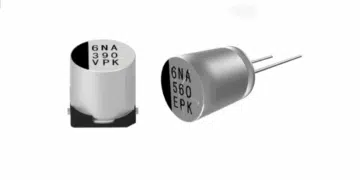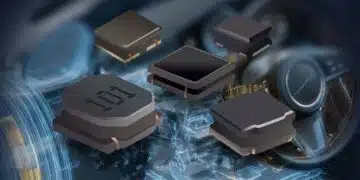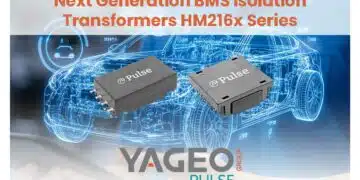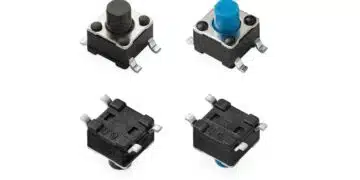The paper Layer-By-Layer Printed Dielectrics For Next-Generation Film Capacitors For Energy Efficient Space Systems was presented by William Greenbank, University of Southern Denmark, Sønderborg, Denmark during the 5th Space Passive Component Days (SPCD), an International Symposium held from October 15th to 18th, 2024, at ESA/ESTEC in Noordwijk, the Netherlands. Published under permission from ESA SPCD organizers.
Introduction
In the evolving landscape of space systems, efficient energy storage solutions are paramount. The increasing number of space missions demands power systems that are not only high-performing but also lightweight and compact.
Polymer film capacitors, especially those made from polypropylene, are widely used in space electronics. However, their limited energy density constrains the efficiency and design flexibility of space-bound systems.
This article explores the innovative approach of layer-by-layer (LbL) printed dielectrics, aiming to enhance the performance of next-generation film capacitors for energy-efficient space systems.
Key Points
- Current Limitations: Traditional polypropylene film capacitors exhibit low energy density and are sensitive to space radiation.
- Innovative Approach: Introduction of LbL printing technology to produce nanocomposite dielectrics with improved energy density and structural integrity.
- Radiation Sensitivity: Investigations into helium ion irradiation effects on film properties, with potential applications in device pre-treatments.
- Dielectric Enhancements: Use of ceramic nanoparticles and surface functionalization to improve capacitance without significantly increasing weight.
Extended Summary
The article begins by addressing the critical role of power electronics in space systems, where components such as capacitors contribute significantly to the overall mass and volume. Traditional film capacitors, predominantly made from polypropylene, face energy density limitations, making them inefficient for modern aerospace applications. The authors propose that integrating ceramic nanoparticles into polymer films can enhance energy storage capacities, albeit with challenges related to material uniformity and radiation sensitivity.
The core of the paper introduces a breakthrough in manufacturing: the layer-by-layer (LbL) printing technique. Unlike conventional melt extrusion, LbL printing allows for precise control over the thickness and composition of dielectric films, achieving sub-micron dimensions. This method facilitates the incorporation of nanoparticles without the clustering issues seen in traditional processes, thus maintaining high breakdown voltages and energy densities.
Experimental results demonstrate that capacitors manufactured using this technique, even with minimal nanoparticle content, show significant improvements in specific capacitance and energy density. Additionally, the LbL approach supports the functionalization of nanoparticles, such as using surfactants to enhance dielectric properties further.
The study also explores the effects of helium ion irradiation, mimicking the harsh space environment. It was observed that irradiation alters the polymer film’s thickness and capacitance, which could be detrimental in operational systems. However, controlled irradiation might be used strategically during manufacturing to tune material properties, provided that long-term reliability is ensured.
Conclusion
Nanocomposite dielectrics produced via LbL printing represent a promising advancement in capacitor technology, offering superior energy densities and reduced weights—key attributes for space applications.
The ability to fine-tune dielectric properties through material engineering and irradiation techniques opens new avenues for designing resilient, high-performance electronic components. This innovation not only meets the stringent demands of aerospace systems but also holds potential for broader applications in automotive and portable electronics.
Read the full paper:


































